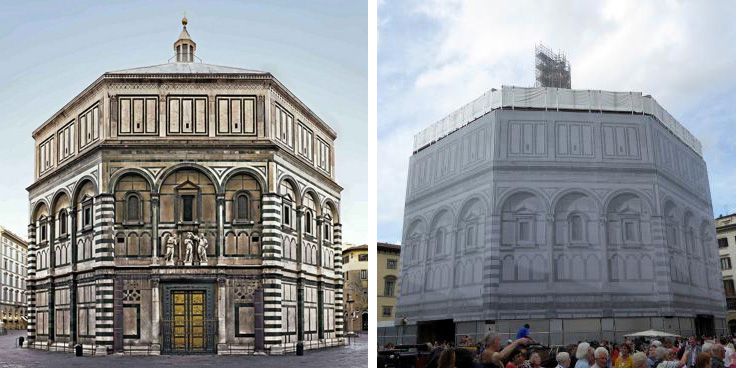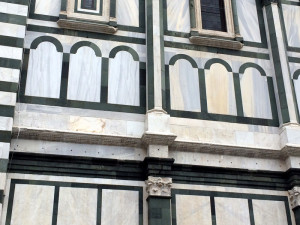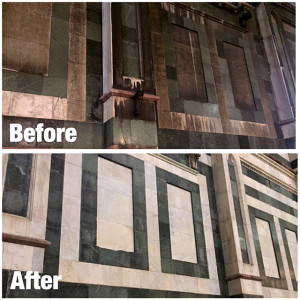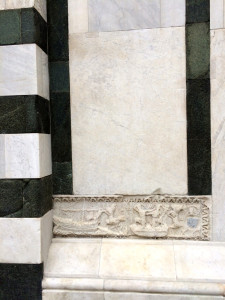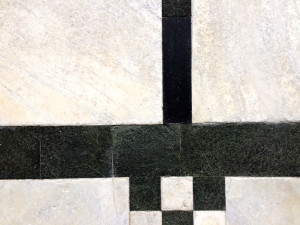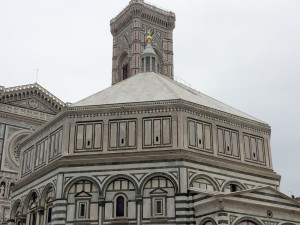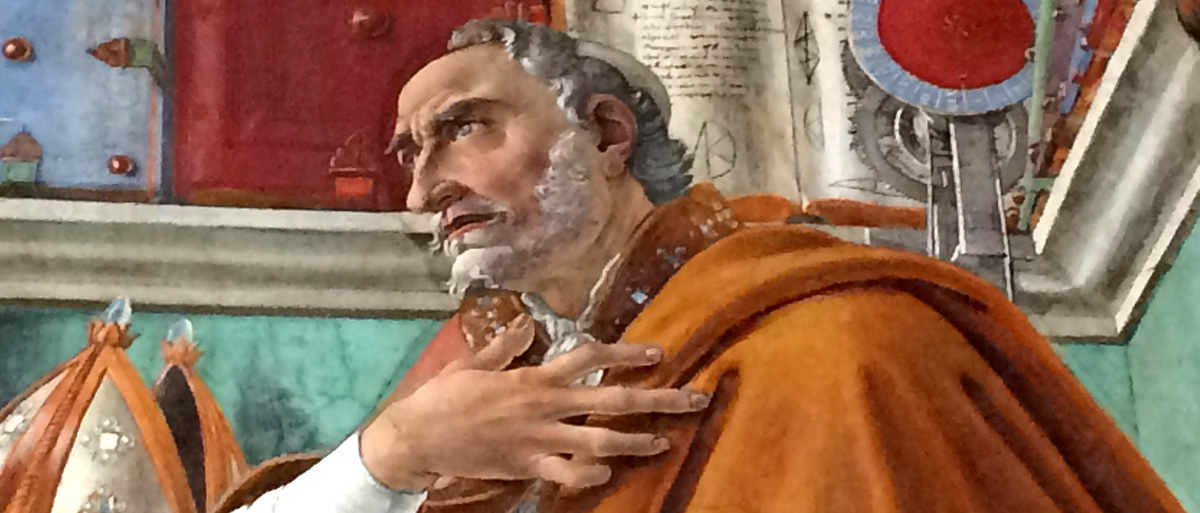 It was a stormy afternoon (not night), when I nervously entered Florence’s Ognissanti Church to check if Botticelli’s St. Augustine had finally returned. My last meeting had run late and I was out of breath. Tomorrow my flight was leaving at sunrise, so this would be my last chance. I walked at top speed nearly the whole way, because it was close to closing time. There was no time to take more than a few irresistible last looks at the city (Santa Maria Novella, the Arno). Luckily, a thunderstorm had just ended, thinning the crowds of tourists, but the stone pavement was slippery in spots along the way.
It was a stormy afternoon (not night), when I nervously entered Florence’s Ognissanti Church to check if Botticelli’s St. Augustine had finally returned. My last meeting had run late and I was out of breath. Tomorrow my flight was leaving at sunrise, so this would be my last chance. I walked at top speed nearly the whole way, because it was close to closing time. There was no time to take more than a few irresistible last looks at the city (Santa Maria Novella, the Arno). Luckily, a thunderstorm had just ended, thinning the crowds of tourists, but the stone pavement was slippery in spots along the way.
For the past three years, I had made this pilgrimage, only to experience disappointment. Ognissanti, one of the important neighborhood parish churches of Florence, has quite a few treasures, like its beautifully restored, spectacular 15 foot tall crucifix by Giotto. It is also the final resting place of Sandro Botticelli, his tomb near the feet of his unrequited love, Simonetta Vespucci, the model for The Birth of Venus and other masterpieces. Visitors from around the world leave love notes addressed to the artist there.
But one of my favorite Botticelli frescoes, St. Augustine in his Study (1480), has been missing for years, its place taken by a mounted, fading color photocopy. Just across the aisle hangs a fresco designed to be the other half of a pair — Domenico Ghirlandaio’s St. Jerome in his Study (1480). St. Jerome appears to be looking across at St. Augustine. Leaning his head in his hand, he seemed to, while trying to be philosophical, share my frustration looking across at the poor copy.

Domenico Ghirlandaio, St. Jerome in his Study, 1480

